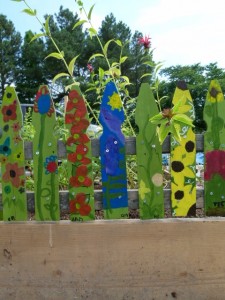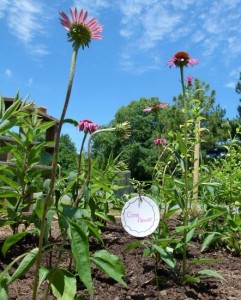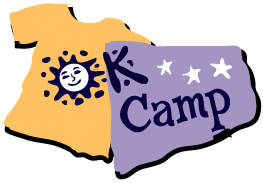From paper plans to live plants…
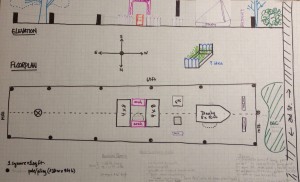
Nature campers first reviewed guidelines for planting a pollinator garden and some preliminary garden plans.
Pollinators Gardens Should:
-
use plants that provide nectar and pollen sources -
provide a water source, -
be situated in sunny areas with wind breaks -
create large “pollinator targets” of native or non-invasive plants -
establish continuous bloom throughout the growing season -
eliminate or minimize the impact of pesticides.
Campers worked in 2 teams to create a scaled design plan using a selection of native plants known to attract insect and bird pollinators. The plant’s color, spread, and height were important factors in the overall design.
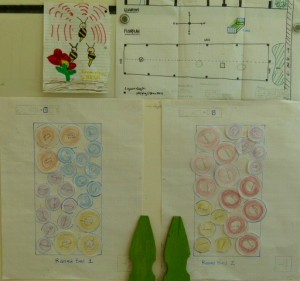
Time to get dirty!
Campers used the paper design plans to guide the final placement and planting in the actual raised bed garden boxes. They also learned tips for planting and watering.
Congratulations Team 1 – Walker, Camp, Owen, Cameron, and Jaylin braved the hot sun to get 20 plants in the ground!
- 5 dwarf Joe Pye Weed (summer purple)
- 5 pink coneflower (summer pink)
- 5 goldenrod (late summer yellow)
- 5 bee balm (summer red)
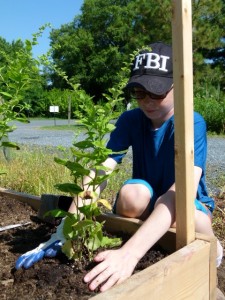
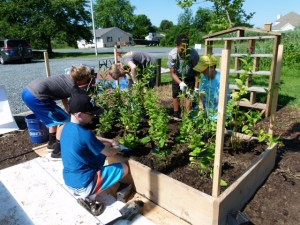
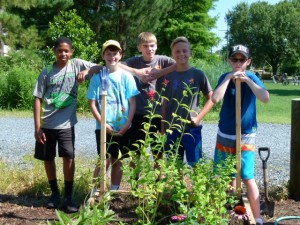
Congratulations Team 2 – Tobin, Holly, Quinn, and Jaylin continued the effort to get 24 plants in the ground!
- 3 butterflyweed (summer orange)
- 3 black-eyed Susan (late summer yellow)
- 9 blazingstar/gayfeather (summer purple)
- 9 NY aster (late summer blue)
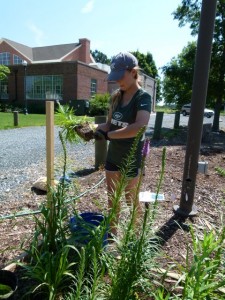
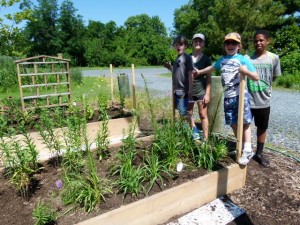
While not planting in the garden, campers finished painting their flower pickets and created plant markers to put in the garden beds. Thanks to counselors Natalie and Valerie for your creative efforts!
